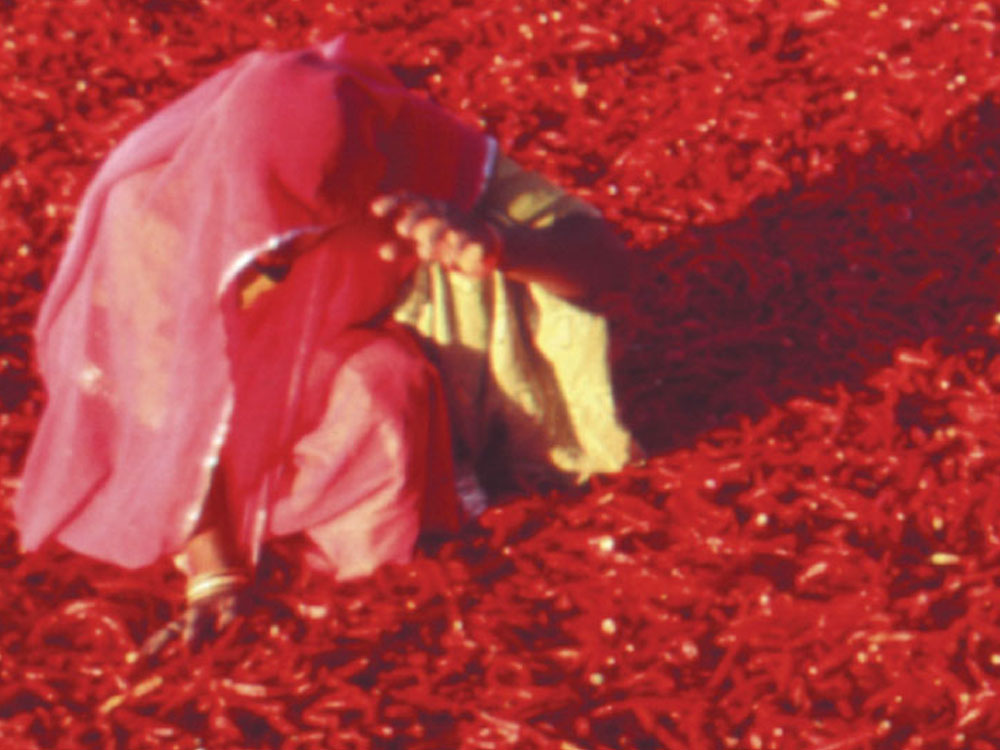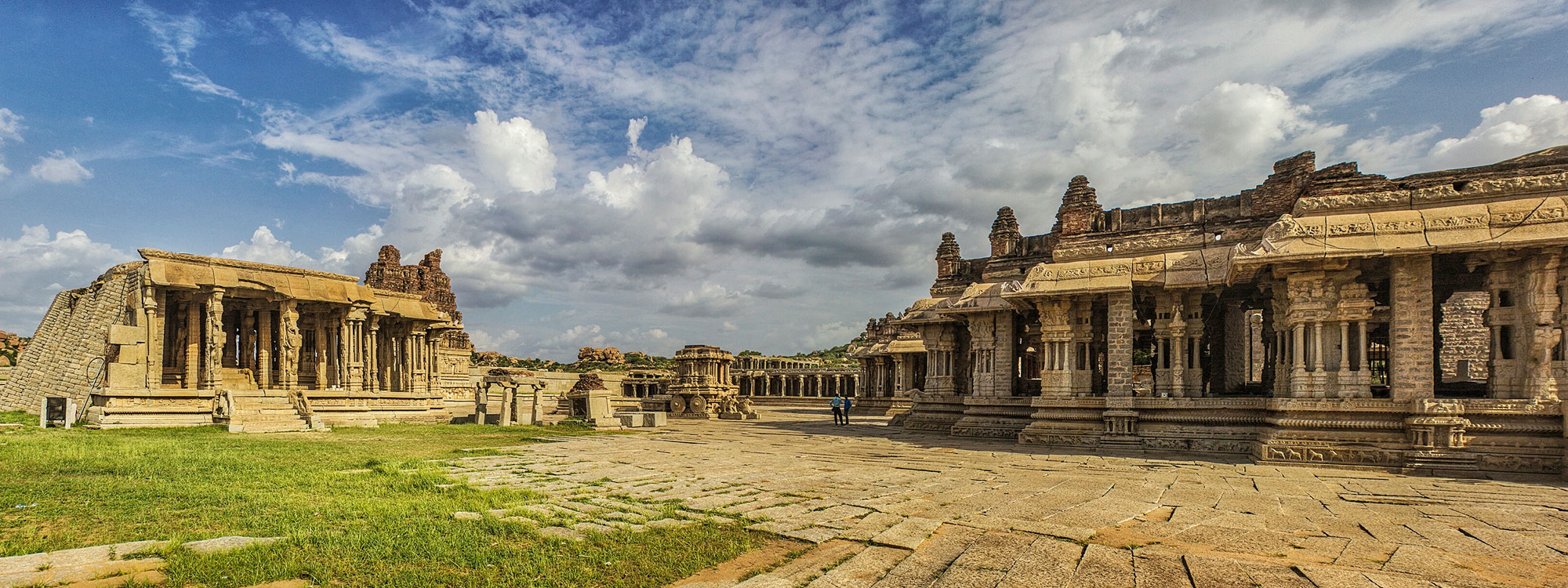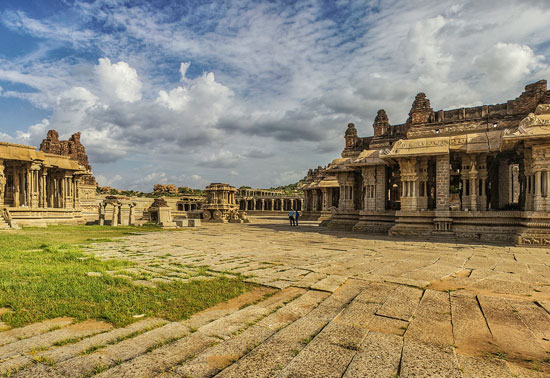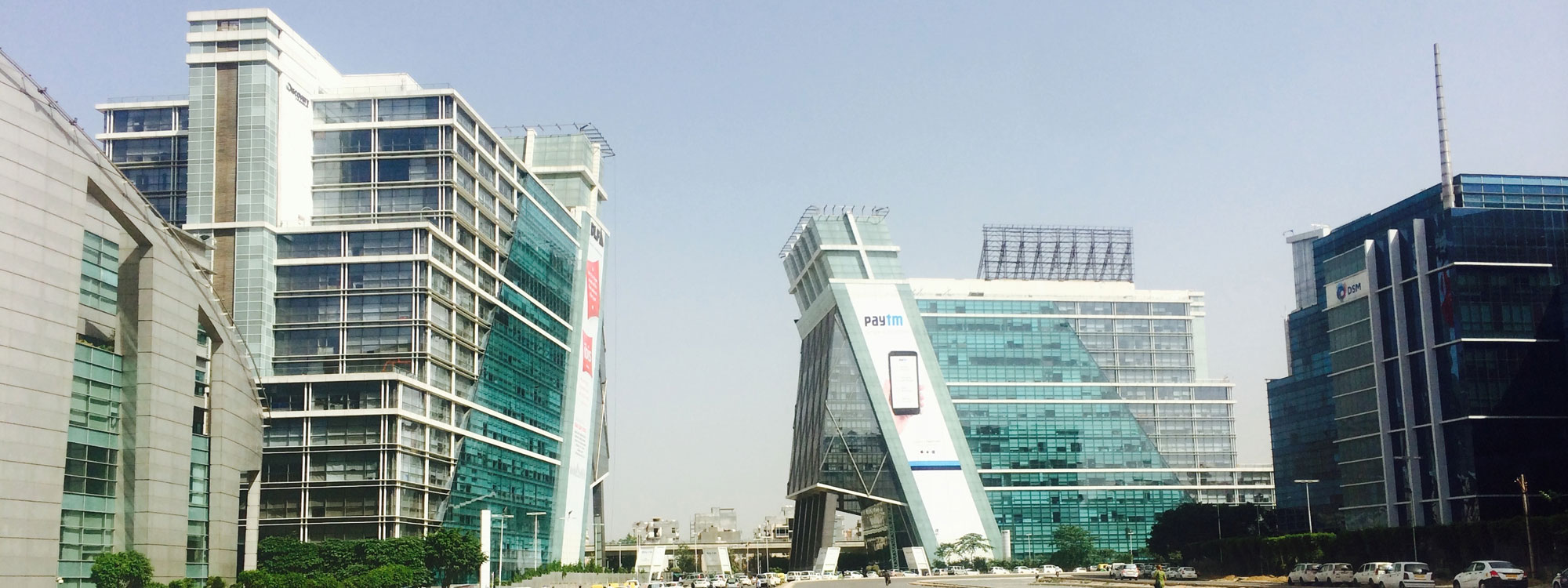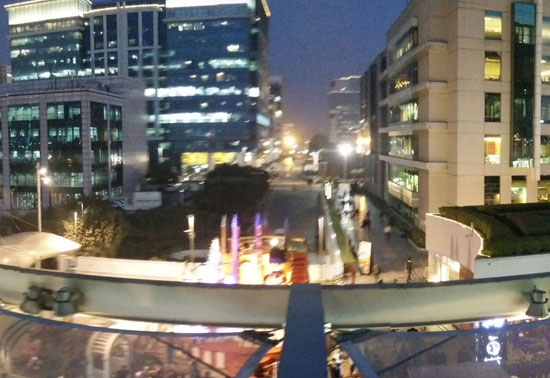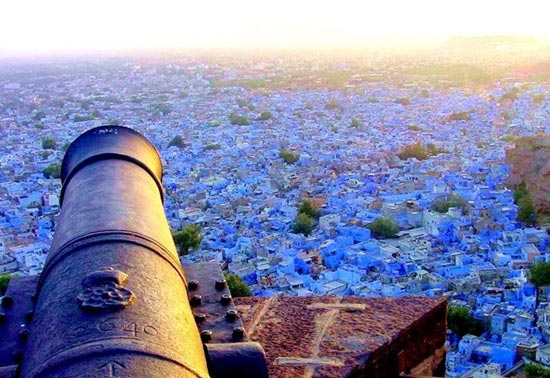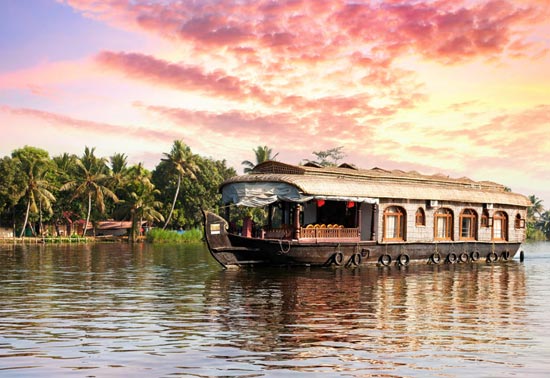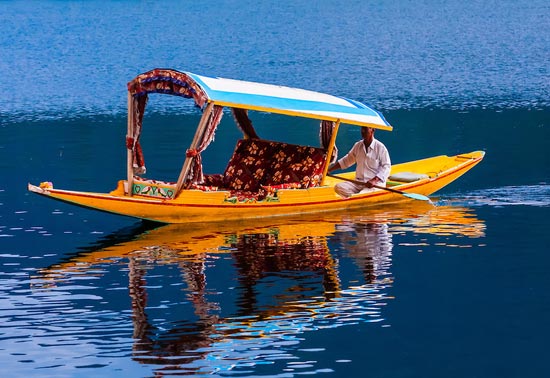Incredible India: India a distinct identity unmatched in the world
What strikes a visitor to India most is its mind-boggling heterogeneity, an awesome plurality that confounds and exasperates and yet evokes a binding interest in the land and its people. Doubtless, the ancient traders and historic marauders who came here from far away lands in search of riches fell in love with the soil and found their destination and place of settlement in the sub-continent rather than a staging post. A staggering variety within its confines in terms of its people, their languages, religions, cults and cultures as also its geographical features and weather which, perhaps, no other country, least of all a democratic nation, can boast of. And yet despite these stunning differences there exists a subtle binding force flowing through one end of the country to the other that underlines its enduringly mysterious unity. Jawaharlal Nehru, India's first Prime minister thus characterized the staggering phenomenon as unity in diversity, a mosaic of cultures and people. That gives India a distinct identity unmatched in the world. Indians never miss an opportunity to assert their pride in their land's assimilative variety.
India is a vast country ranking fourth in the world in size, a sixth of Mankind on a fortieth of the earth's land. In population, a little over 1 billion, it stands second only to neighbouring China. Newcomers are always amazed by the variety of colour, physical stature, anthropological features and sociological characteristics they find among the people of the sub-continent. From Nordic-Aryans and Indo-Europeans to Mediterranean Dravidians one finds almost all the hues of human species on the planet. In between there are people betraying Mongoloid origins, proto-Australoids, Negrito and Western Brachycephals. As you go from North to South, the paleness of people's colour seems to gradually yield to a dark hue. But that is only a general pattern. In a single family, whether in the South or the West, one may find members displaying different colours of skin, hair and eyes. To add to the grandeur of variety, India perhaps has the largest cattle population in the world, about 200 million at the last count.
Equally staggering is the variety of languages. India speaks in about 2000 tongues of which over fifty have their own scripts and literature. Nineteen fully developed languages each having a vast body of literature are officially recognised languages of the state. Name a religion in the world and it has adherents in the sub-continent. While Hindus form an overwhelming majority of 85 per cent, there are Muslims, Christians, Buddhists, Jews, and Zoroastrians living in close harmony all over India. There is a plethora of beautiful temples, magnificent churches, grand mosques, Buddhist Viharas old Synagogues and Parsi Fire Temples spread throughout the sub-continent. Mumbai (formerly Bombay), the Western commercial megalopolis, perhaps, represents exquisitely the grand religious, ethnic, cultural and linguistic variety of India in a miniature form. There is in the city an old Armenian Church, a Shinto Temple and a Bahai place of worship, just to mention a few.
In Mumbai, Chennai, Kolkata, particularly the latter, one may witness several centuries, nay civilizations living cheek by jowl. On the Diamond Harbour Road of Kolkata, emerging out of an air-conditioned cyber cafe, one may stumble on to an aboriginal family living on the footpath, cooking food with firewood, bathing and washing. Across the street, you may have to give way to a hand-cart puller or a bullock cart carrying a mountain of computer packages or vegetables. You might hire a three-wheeler or a two wheeler pulled by a man to rich destination in the neighbourhood. Or jump into a rambling tramcar while city buses careen around and sleek cars whiz past. Far above in the sky, a modern airliner may be zooming away to distant lands and underground the fast metro rumbles away.
Like its people, India's geology, geography and climes present a veritable panorama of the planet's history. Himalaya, world's highest and the youngest mountain system forms a formidable barrier to the north stretching uninterrupted from East to West for about 2,500 km covering an area of 500,000 sq. km. Its snowy glaciers - Siachen, the world's highest - feed India's major perennial rivers creating fertile valleys in the North and the West. Ganga, the sacred river of India, Yamuna, Sindhu and Brahmaputra have spawned civilizations along their fertile banks from the hoary past. Down below in the North-West, there is the oldest mountain systems in the world, the Aravalis, which over millions of years, has lost its glory and substance.
Vindhya and Satpura ranges running east to west in parallel formations traverse almost the entire peninsular India. Parallel across the Western coast are the Sahyadri Mountains. The Eastern coast is also lined with a hill system, irregular though, called Eastern Ghats. Each mountain system is dotted with hundreds of exotic beauty spots made easily accessible and equipped with modern amenities. There are skiing resorts in the Himalayas. Well planned mountaineering treks and river fording sports are also available in Himalayas and elsewhere. Each mountain range has its own peculiar majesty, grandeur and specific geological character. The forests, mostly sub-tropical and some of them perennial, harbour a variety of wild life. There are scores of wild life and bird sanctuaries which provide an exciting glimpse of the jungle world.
Proximity of Sahyadri has created numerous beautiful gorges, fiords, creeks and lagoons shaded by perennial green cover along the Arabian Sea coast particularly in Kerala, Goa and Konkan region of Maharashtra. These provide blissful coves of retreat known for their serene beauty. And the long pristine beaches along the Arabian Sea and also the Bay of Bengal - India has a 7,516 km.-long coastline - provide haven for sun-bathers and lovers of all kinds of water sports. At several places along the backwaters of Kerala traditional rowing tournaments, complete with colourful festivities, fetch rowing buffs and spectators in large numbers.
Down from the snow-topped Himalayas and across the fertile plains of Punjab stretch the undulating sandy deserts of Rajasthan, stark and hot, bereft of greenery and yet known for a riotous celebration of colours. As if to compensate for the nature's chicanery, the people of Rajasthan have created their own world of beautiful colours - the rich textiles, the turbans of men and the flowing ghagaras of women, ornamental embroidery, exquisite jewellery, the huts, the houses and the princely mansions. It is said that every village housewife, every child of Rajasthan is a born artiste endowed with a talent for brush and colour. Miniature paintings of Rajasthan School have admirers across the world. The exotic cities of Rajasthan, Jaipur, Jodhpur, Udaipur, Bikaner known for their harmonious architecture and a superb blend of colours offer a feast to the discerning eye.
But the vibrancy of folk art, colour, folk dance and music is not confined to Rajasthan. It manifests in the harsh terrain of Ladakh, in the colourful life styles of the north-eastern tribes of Arunachal, Sikkim, Meghalaya, Mizoram, Manipur and Tripura and in the tribal belts of Gujarat, Madhya Pradesh, Orissa and Maharashtra. The traditional village fairs, whether in tribal habitats or agricultural villages of the plains, express the quintessential spirit of rural India. A fair is a veritable riot of sound and music, fun and games, feast of local delicacies, songs and dances and a market of astoundingly colourful local handicrafts. A heartening glimpse of a robust and vigorous India of indomitable hope. There are over 700,000 villages in India and thousands of fairs are held annually. Some of these have earned a reputation attracting visitors from all corners of the country and abroad.
South of the Vindhyas and Satpuras flow the mighty rivers like Narmada, Tapti, Godavari, Krishna, Mahanadi and Cauveri. These and Brahmaputra of the East too have witnessed the rise and fall of mighty kingdoms and their cultures from the ancient times whose archaeological remains and surviving monuments are spread all over the peninsula. The Tamil culture of the South pre-dates the Vedic civilizations of the North and proud Tamilians regard their language older than Sanskrit.
With its vast continental stretch - between 8.4 and 37.6 degrees latitude north of equator - climates and seasons violently differ. Just when Ladakh, the valley of Kashmir, the Himalayan foothills and Punjab nearly freeze with temperatures hovering around zero or below, the southern peninsula may swelter with mercury rising above 30 degrees Celsius. Most of the sub-continental agriculture sustains on the south-westerly monsoon which visits India between June and September. That makes agriculture difficult. Several irrigations schemes from North to South do provide some relief. But it is the innovative farmer of India who by sheer dint of hard work and diligence has overcome the vagaries of monsoon. India, which used to be frequently visited by harsh famines, now exports grains and fruits after feeding its entire population, three times of what it was at the time of Independence in 1947.
From snow clad peaks in the north to the sun drenched beaches down south, through the tropical dense forests to the parched golden sand dunes, India surely is a vast colourful canvas. Adding to these is the colourful attire people of India wear and a mammoth number of coloured flora and fauna which are spread throughout the country. A mind boggling hetrogenity, an un-raveled mystery, a place to fall in love with at every step … India is probably the only one country on the planet with so much of choice to see, touch, taste, smell and hear!
India's known history goes back to 2000 B.C. when the first wave of the Aryan immigrants settled in the north. Violent confrontations must have occurred between the immigrants and the local inhabitants. But apparently the great Indian spirit of assimilation and tolerance triumphed which endures till today. During the next millennium, the Aryans spread all over India and composed most of the early classic Sanskrit scriptures, such as Brahmans, Vedas, Upanishads and the two monumental epics, the Ramayana and the Mahabharata.
Then came around 550 B.C. the era of Gautam Buddha whose teachings spread all over Asia. Alexander the Great invaded north India in the 4th century BC. The Indian golden age begins when Chandragupta Maurya assumed the throne of Pataliputra, today's Patna, the capital of Bihar, in 321 BC. There followed a succession of Kingdoms, both in the north and the south, the most notable of them being that of Emperor Ashoka who was instrumental in spreading the message of Buddha far and wide. Down south, Chola and Pandyan dynasties flourished from 200 BC onwards when the temple architecture of the south flourished and arts such as sculpture, poetry, music and dance reached great heights.
The first Muslim adventurers set foot in India when Muhammad-Bin Kasim captured the province of Sindh in 711 A.D. By 1206 Qutubuddin Aybak, in whose name Delhi's famous Qutub Minar was built, established the first slave dynasty in Delhi. The Sufi saints of Islam preaching mystical devotion and peace had preceded the armed invaders much earlier. Babar established the Mughal dynasty in 1526. Before that, Vasco-da-Gama, the Portuguese adventurer had landed at Calicut.
The Mughals built the most powerful empire of the contemporary world and ruled India for nearly 180 years till the death of Emperor Aurangzeb in 1707. Barring Shivaji, a daring Maratha warrior who emerged from the mountains of Sahyadri, no satrap, subhedar or King had dared to challenge mighty Aurangzeb's authority. Shivaji coronated himself and was extolled as the people's king. Shivaji's heirs, the Peshwas, were the last major rulers of India to fall before the might of the British East India Company.
Thus India is replete with numerous historic monuments. The ancient stupas some of which preserve part of Buddha's ashes, the Ashokan edicts on stone and copper tablets or carved on magnificent pillars spread all over the sub-continent, the exquisitely carved cave temples of Ajanta, Ellora, Elephanta and elsewhere in Maharashtra, the magnificent temples of the south, east, west and north preserving different architectural styles, the forts and mansions of Rajasthan, the grand Red Fort and several historic monuments of Delhi, the majestic Fatehpur Sikri, the grandeur and beauty of Taj Mahal.......the list is unending. Once a visitor is hooked to the magic of India, he/she can never see enough.
Modern India is a vibrant country, proud of its transparent democracy which is the largest in the world. Few countries of the developing world liberated after the Second World War have preserved and protected their democratic institutions so jealously. True, some pockets of poverty remain and slums proliferate in cities and towns. But by and large, India's scientific and industrial skills along with the living standards and styles of its middle classes put it firmly in the 21 century. Its young information technology engineers and entrepreneurs have acquired respect in the world. The growth rate of its GDP today is next only to that of China. It pulsates with the vigour and energy of its people who are ready to conquer the new world.



